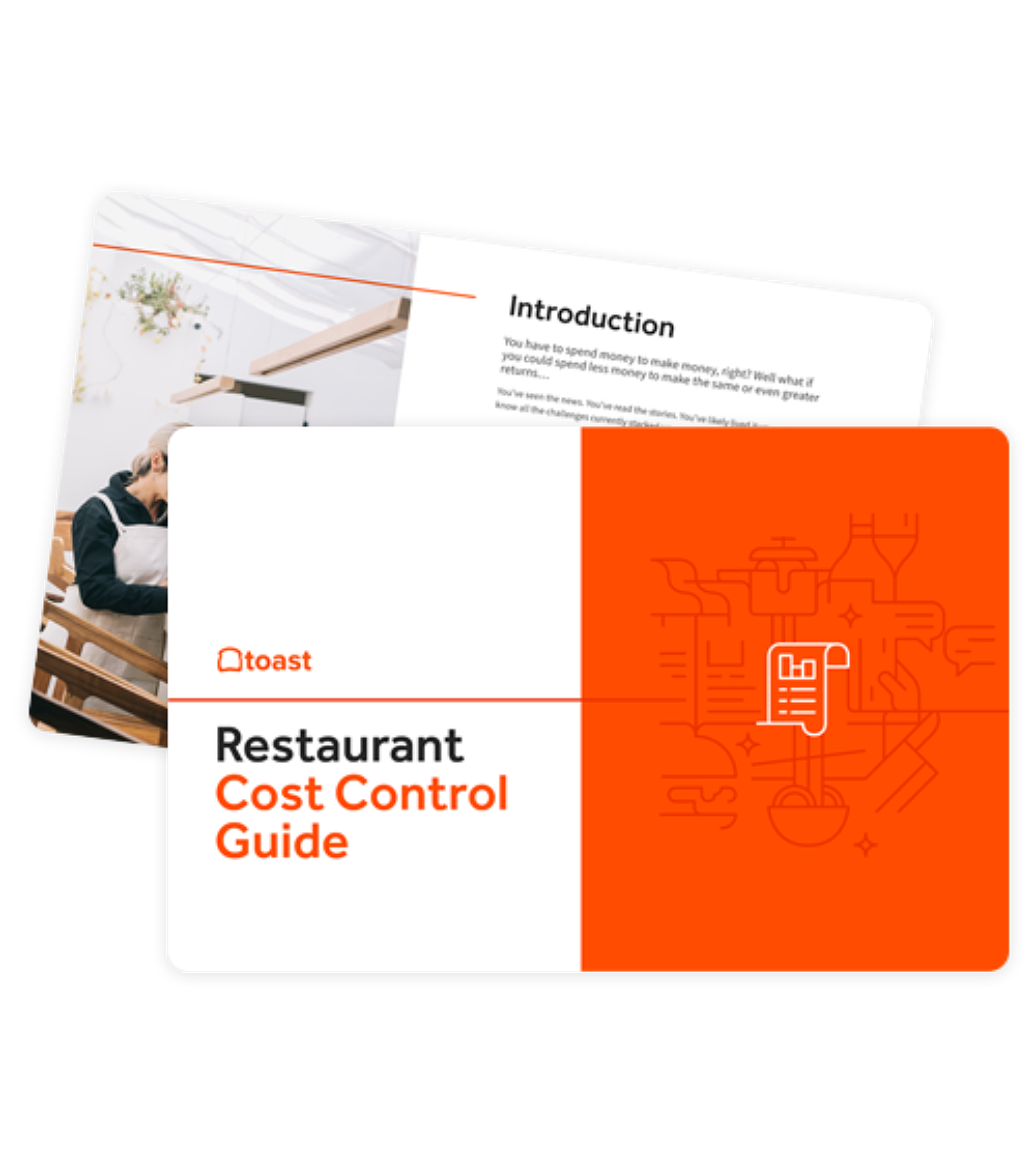
State of Egg Prices: Wholesale Restaurant Food Cost Trends
See trends and fluctuations for wholesale restaurant egg prices based on proprietary Toast data.

Tessa ZuluagaAuthor


Restaurant Cost Control Guide
Use this guide to learn more about your restaurant costs, how to track them, and steps you can take to help maximize your profitability.
Egg prices have been making headlines as of late — and that’s saying something considering how restaurant food costs and ongoing food inflation have been.
Eggs are a versatile and cost-effective ingredient that can be found on the menus of many restaurants, from fast-food chains to upscale eateries. And they’re essential for bakery products, ice cream, and other delights.
The price of eggs has been fluctuating in recent years, creating challenges for restaurant owners and operators.
Restaurant Operator Insights Report
See insights from real restaurant operators which can help you benchmark your current and planned restaurant technology stack against your peers as we head into 2024 and beyond.

Toast is the point of sale system built for restaurants.
We're able to calculate the average monthly prices that restaurants pay for eggs and other ingredients by using proprietary data from xtraCHEF by Toast, our invoice automation and recipe costing tool.
The average national price for a dozen eggs was $1.87 in August.
This represents a 21% month-over-month decrease in restaurant egg prices.
Historic egg price trends
Here's a month-over-month breakdown egg price movements over the past three years for restaurants:
Eggs spiked at an average cost of $5.03 for restaurants in January 2023.
The average price restaurants have paid for a dozen eggs over the past four years is $2.17. As recent prices retreat, they're falling back in line with the four year average price.
Commodities experts weigh in on egg prices
We talked with experts in the egg and poultry space to understand the impact of rising egg prices on restaurants around the country. Here's what they had to say.
Question
Do we think we’re done with these short-term spikes, and if so, should restaurant operators expect a return to our 4-year average of $2.16/dozen (currently at $3.75)?
No, the egg market has always been volatile, but a 2023 repeat of the recent record price spike is unlikely. Here’s the rationale: Large egg prices at 149.88 cents/dozen for Combined Regional (1), Spot prices for large white eggs have retreated to pre-COVID levels (2), Current egg inventories on hand are trending upward (2), Summer 2023 egg prices Y/Y should be decidedly lower than 2022 (3), and Egg laying flock size still ~3% smaller compared to pre-HPAI 2022 flock size but steadily increasing (4).

Kevin Bergquist
Wells Fargo Agri-Food Institute
The volatility in restaurant egg prices may give pause to chefs and operators looking to prominently feature egg-dishes on their menus. It can be tough to maximize margins and sustain profits as egg costs fluctuate.
For restaurants using eggs, investing in an in-depth cost-tracking tool like xtraCHEF will enable you to see the impact of rising costs for eggs, as well as across all other menu items.
Nest steps informed by this data may include:
Switching to a different egg alternative (such as liquid eggs)
Opting for a cheaper, lower grade of eggs
Reconfiguring a menu to lessen the focus on eggs
Contributing factors to high prices for eggs over the past year
Restaurant egg prices were able to weather the supply chain issues, food inflation, and impacts of the pandemic rather well. We don’t see consistent price surges above $3 per dozen until April 2022.
There are several factors that can contribute to higher egg prices:
Increased consumer demand: It’s possible that as more people stayed at home due to the pandemic, the demand for eggs spiked. All the cooking and baking at home may have played a role in increasing demand for eggs, and it may have had an impact on retail prices at the grocery store, but it’s not showing up in our restaurant pricing data.
Supply chain disruptions: The egg supply has had a scare in recent months. led to disruptions in the supply chain for eggs. There have been issues with transportation and processing, which has made it more difficult to get eggs to market.
Avian flu outbreak: The egg supply was impacted by outbreaks of the highly pathogenic avian influenza in some areas of the US. This scare has impacted egg production and likely contributed to the recent record highs restaurants have seen with prices.
Different grades of eggs
Eggs in the United States are graded based on their quality, size, and condition by the U.S. Department of Agriculture (USDA). The USDA’s three grades of eggs are:
1. Grade AA: These eggs have thick, firm whites and high, round yolks. The shells are clean and unbroken — highest quality and ideal for eating as an egg, such as poaching, scrambling, and frying in some oil, butter, or margarine.
2. Grade A: These eggs have slightly thinner whites and yolks that are slightly less round than Grade AA eggs. The shells are clean and unbroken. Grade A eggs can still be high quality and suitable for the same egg dishes as Grade AA.
3. Grade B: These eggs have thinner whites and flatter yolks than Grade AA and Grade A. The shells may have slight stains or cracks. Grade B eggs can be a good fit for commercial purposes, such as processed foods and certain baking that put less importance on the final appearance of the egg.
The grading of the eggs is strictly related to quality and aesthetic and has no impact on nutritional value.
Restaurant Operator Insights Report
See insights from real restaurant operators which can help you benchmark your current and planned restaurant technology stack against your peers as we head into 2024 and beyond.

Start tracking egg prices today
Eggs are a cornerstone of restaurant menu items and recipes. Along with being the star of breakfast, eggs are an essential ingredient that show up in baked goods, dressings, and more.
Incorporating volatile egg prices — and all ingredient costs — into financial reports requires restaurant operators to have a strong back-of-house foundation built on invoice automation.
Invoices are the single source of truth for restaurant costs — pinpointing prices and fluctuations for individual ingredients as well as paper goods, non-alcoholic beverages, and more.
With accurate and up-to-date ingredient prices from invoices, operators can start calculating plate costs. Plate costing is a detailed exercise that zooms into the recipes and/or individual ingredients that make up a dish — requiring detailed recipe costs and portion costs for ingredients.
Costing exercises can help show how each component is contributing to the overall profitability of a dish or drink. And recipe costing software can help make it easier to calculate and achieve an ideal balance between portions and profits.
1 USDA, Egg Market News Report, May 1, 2023
2 Urner Barry, Dairy & Egg Report, April 26, 2023
3 Wells Fargo Agri-Food Institute opinion
4 Urner Barry and USDA, Reported layers on first of the month, April
Methodology
Toast analyzed monthly invoice items for eggs from restaurants using xtraCHEF by Toast. Items are weighted by the frequency of orders, not quantity. A standard unit of measure is determined so that an average price can be calculated across all invoice inclusions of the ingredient.
Is this article helpful?
DISCLAIMER: This information is provided for general informational purposes only, and publication does not constitute an endorsement. Toast does not warrant the accuracy or completeness of any information, text, graphics, links, or other items contained within this content. Toast does not guarantee you will achieve any specific results if you follow any advice herein. It may be advisable for you to consult with a professional such as a lawyer, accountant, or business advisor for advice specific to your situation.
Subscribe to On the Line
Sign up to get industry intel, advice, tools, and honest takes from real people tackling their restaurants’ greatest challenges.
